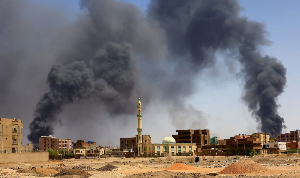Dr Eric Osei Assibey, a Senior Research Fellow at the Institute of Economic Affairs (IEA), has indicated that signs of the of the collapse of banks were evident since the year 2012.
Speaking at the forum held at the Danquah Institute under the theme, “THE BANKING SECTOR CLEAN UP – ARE DEPOSITORS SAFE?” he mentioned that the currency depreciation to about 39% in 2014, coupled with a high-interest rate of about 35% were all contributory factors to the collapse of banks as they had too much to lend and a high rate of non-performing loans.
“I wasn’t too surprised to see some of the banks collapsing, right back from 2012, the signs were very clear, when you have a currency depreciation of about 39% in 2014, and you have your interest rate going up to about 35%, this meant banks will be making more profit because they have a huge appetite to lend,”
“Between 2012 to 2013 the average growth in credit supply was about 50%. When the interest rate goes up, and you begin to give too much credit, you expose yourself to high credit risk, the credit rate default will be very high,” Dr Osei Assibey explained.
He added the high rate of non-performing loans was another contributory factor to the collapse of banks, adding that the Bank of Ghana’ s recapitalization measure was a step in the right direction.
The BoG on Wednesday, August 1, 2018, collapsed five banks and merged them into what the BoG called ‘Consolidated Bank Ghana Limited.
The banks are BEIGE, Sovereign, Construction, Royal, and UniBank.
According to the Bank of Ghana, the reason for the merger includes liquidity challenges, the inability of the said banks to meet the Ghc400 million minimum Capital requirement, and the fact that some of these banks obtained their licenses under false pretenses and with non-existent capital.
Business News of Thursday, 23 August 2018
Source: The Publisher













